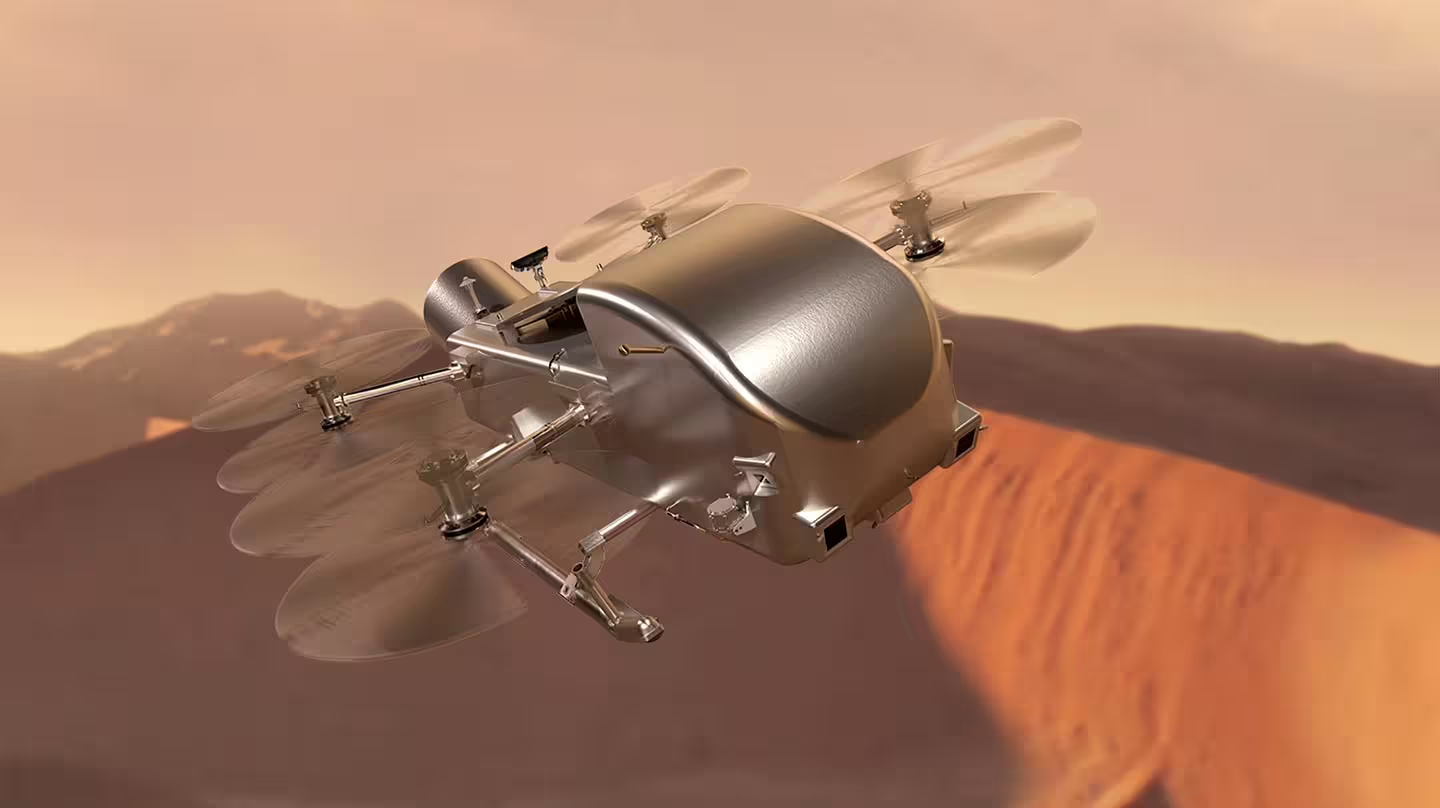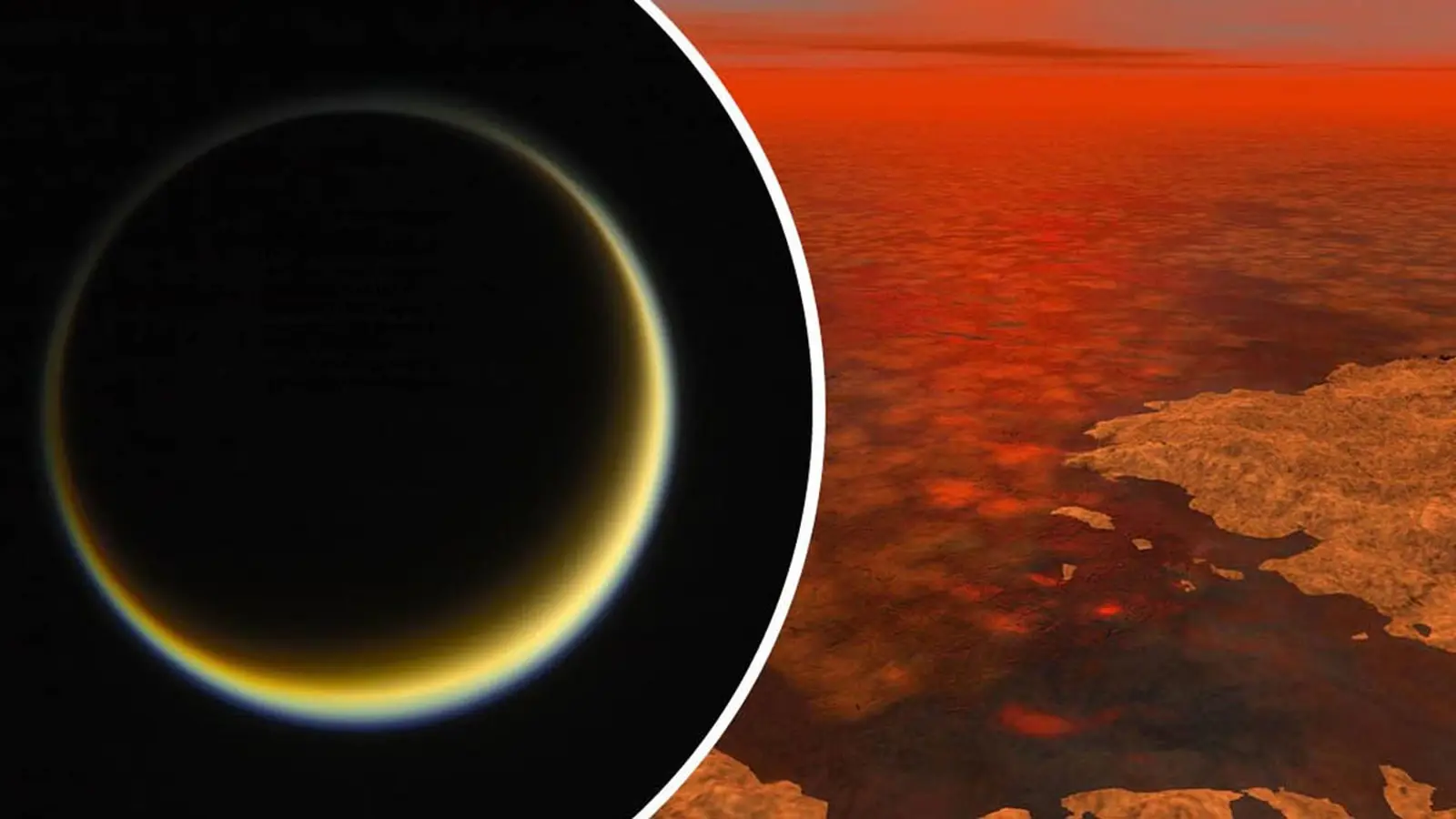8 Minutes
Saturn’s largest moon, Titan, has once again surprised scientists. New research shows that under Titan’s frigid conditions, hydrogen cyanide can lock together with methane and ethane in stable solid structures — a chemistry twist that challenges a long-held rule about how polar and nonpolar molecules behave.
Researchers from Chalmers University of Technology, working with experiments at NASA’s Jet Propulsion Laboratory (JPL), combined laboratory measurements and large-scale calculations to reveal these unexpected co-crystals. The finding not only reshapes our understanding of Titan’s surface chemistry but also provides fresh clues about how prebiotic molecules could form in extreme cold.
Researchers have long been interested in Saturn’s largest moon, Titan, and its icy environment, which harbours lakes, seas, sand dunes and a thick atmosphere full of nitrogen, methane, and complex carbon-based chemistry. Titan share some commonality with the early evolution of our planet and may therefore give researchers clues to the origin of life. Credit: NASA-JPL-Space Science Institute
Why this discovery matters: mixing what shouldn’t mix
In chemistry textbooks the maxim “like dissolves like” summarizes a simple truth: polar molecules (with an uneven charge distribution) attract each other, while nonpolar molecules prefer their own kind. Under ordinary conditions, hydrogen cyanide (a strongly polar molecule) and hydrocarbons such as methane and ethane (nonpolar) should remain separated—think oil and water at cryogenic temperatures.
But experiments at JPL, probing mixtures at temperatures down to about 90 K (roughly -180 °C), detected spectral signatures that didn’t fit that neat picture. Instead of seeing hydrogen cyanide simply freezing out in isolation or methane and ethane staying liquid, the measurements suggested a new solid phase — a mixed crystal in which hydrocarbons had insinuated themselves into hydrogen cyanide’s lattice.
To interpret these puzzling spectra, Martin Rahm and his team at Chalmers ran thousands of atomistic simulations exploring how hydrogen cyanide, methane and ethane might arrange themselves in a solid. The result: stable co-crystals that match the observed spectroscopic fingerprints — a molecular arrangement that blurs the polar/nonpolar divide under Titan-like conditions.
How the experiments and calculations came together
The discovery emerged from a close collaboration: laboratory groups at NASA/JPL performed low-temperature laser spectroscopy on cryogenic mixtures while theory groups at Chalmers modeled possible solid structures and their vibrational spectra. Laser spectroscopy gives a molecular-level readout of how bonds vibrate and how molecules interact in different phases. When the JPL spectra showed unexpected features, the Chalmers team asked: Could these features be explained if methane or ethane were actually incorporated into hydrogen cyanide crystals?
High-performance computing allowed the researchers to test thousands of candidate crystal arrangements. The calculations predicted stable co-crystals at Titan-like temperatures and produced simulated spectra that aligned with the JPL measurements. In short, the laboratory and theory lines of evidence converged on the same surprising answer: hydrocarbons can be trapped inside hydrogen cyanide crystals, forming stable co-crystalline solids.
Implications for Titan’s geology and prebiotic chemistry
This finding has two major implications. First, it changes how we might interpret Titan’s surface geology and landscape evolution. Hydrogen cyanide is abundant in Titan’s atmosphere, created by photochemistry in the haze layers and subsequently deposited on the surface. If cyanide forms co-crystals with methane and ethane, then the distribution, appearance and mechanical properties of surface deposits — the composition of dunes, shorelines and frozen pools — may be different than previously modeled.
Second, and perhaps more provocatively, hydrogen cyanide is a versatile prebiotic feedstock. In laboratory settings on Earth, HCN participates in pathways leading to amino acids and nucleobases — the chemical precursors of proteins and genetic molecules. Co-crystallization with hydrocarbons could alter how HCN is preserved, concentrated, or transformed on Titan, potentially creating microenvironments where complex organic chemistry proceeds, even at very low temperatures.
“These are very exciting findings that can help us understand something on a very large scale, a moon as big as the planet Mercury,” says Martin Rahm, Associate Professor at Chalmers University of Technology. “The unexpected interaction between these substances could affect how we understand Titan’s geology and its strange landscapes of lakes, seas and sand dunes.”
What this means for Dragonfly and future missions
NASA’s Dragonfly rotorcraft mission, scheduled to launch in the late 2020s and arrive at Titan in the 2030s, will explore diverse surface environments and sample organic-rich regions. Knowing that hydrogen cyanide can form co-crystals with methane and ethane helps mission planners refine predictions about surface composition and target sampling strategies. If these mixed solids are widespread, Dragonfly’s instruments may need tuned expectations for how organics present themselves in frozen sediments and surface crusts.
Beyond sampling, the discovery also informs remote sensing. Spectral features associated with HCN co-crystals will affect infrared and Raman signatures that orbiters or flyby instruments collect, aiding in the interpretation of future data sets and perhaps improving the search for zones where prebiotic chemistry is more likely to occur.

Artist’s impression of Dragonfly soaring over the dunes of Saturn’s moon Titan. NASA has authorized the mission team to proceed on development toward a July 2028 launch date. Credit: NASA/Johns Hopkins APL/Steve Gribben
Broader significance: cold chemistry across the Solar System
Hydrogen cyanide is not unique to Titan; astronomers detect it in interstellar clouds, comets and other planetary atmospheres. If HCN can form co-crystals with nonpolar molecules at cryogenic temperatures, that mechanism may be relevant to a wide range of cold environments in space. Co-crystallization could influence how organics are sequestered in cometary ices, how aerosols age in distant atmospheres, or how complex organics survive on the surfaces of icy moons.
“I see it as a nice example of when boundaries are moved in chemistry and a universally accepted rule does not always apply,” Rahm adds. The result is not a contradiction so much as an expansion: chemistry under extreme conditions can follow different pathways than on Earth at room temperature.
Expert Insight
Dr. Lena Morales, a fictional but realistic planetary chemist working at a European astrobiology institute, offers a grounded take: “Co-crystals like these act as cold traps. They can preserve reactive molecules in solid form, slow down degradation, and even create local concentration gradients that are favorable for further chemical reactions. For astrobiology, that’s crucial — reactions that would be impossible in a diffuse gas might occur inside or on the surface of a crystal lattice.”
Such expert perspective underscores a practical point: prebiotic pathways are sensitive to physical context. The same molecules behave differently when locked in solids, adsorbed on mineral surfaces, or dissolved in lakes. On Titan, the interplay between atmosphere, surface liquids and frozen deposits creates a mosaic of chemical environments ripe for unexpected chemistry.
What comes next: mapping, experiments and theory
Rahm and colleagues plan to continue exploring hydrogen cyanide chemistry in collaboration with NASA teams. Open questions include whether other nonpolar molecules — beyond methane and ethane — can enter HCN crystals, how stable these co-crystals remain under cyclical temperature changes, and whether irradiation (from cosmic rays or sunlight-driven particles) can drive further reactions inside the crystal matrix.
Laboratory work will expand to test mixtures with other organics and to simulate Titan’s diurnal and seasonal temperature swings. On the theoretical side, more detailed calculations will explore reaction pathways that become feasible inside co-crystals. Together, these lines of research will refine models of surface composition and the chemical evolution of Titan’s organic inventory.
Ultimately, this discovery is a reminder that planetary chemistry often defies our Earth-centric intuition. Titan continues to be a natural laboratory for cryogenic organic chemistry — a place where simple molecules assemble into more complex forms under conditions very different from our own planet, yet potentially relevant to the early stages of life’s chemistry.
Source: scitechdaily
Comments
atomwave
feels a bit overhyped but still neat. Cold co-crystals could change Titan surface models. need more tests on thermal cycles, radiation and mixed organics. not sold yet
max_x
Is this even true? lab sims match spectra ok, but could other stuff mimic those features or are they sure it's co-crystals — curious about controls, measurements etc
astroset
wow, Titan keeps surprising. HCN locking methane into crystals? mind blown. If widespread, Dragonfly will get weird samples... hope the instruments are ready, curious about irradiation effects tho


Leave a Comment